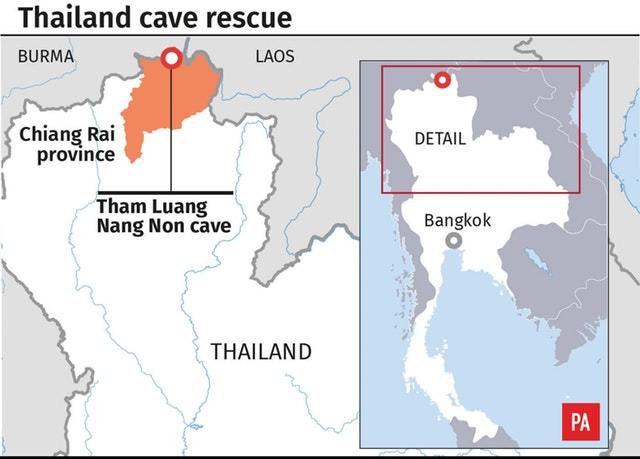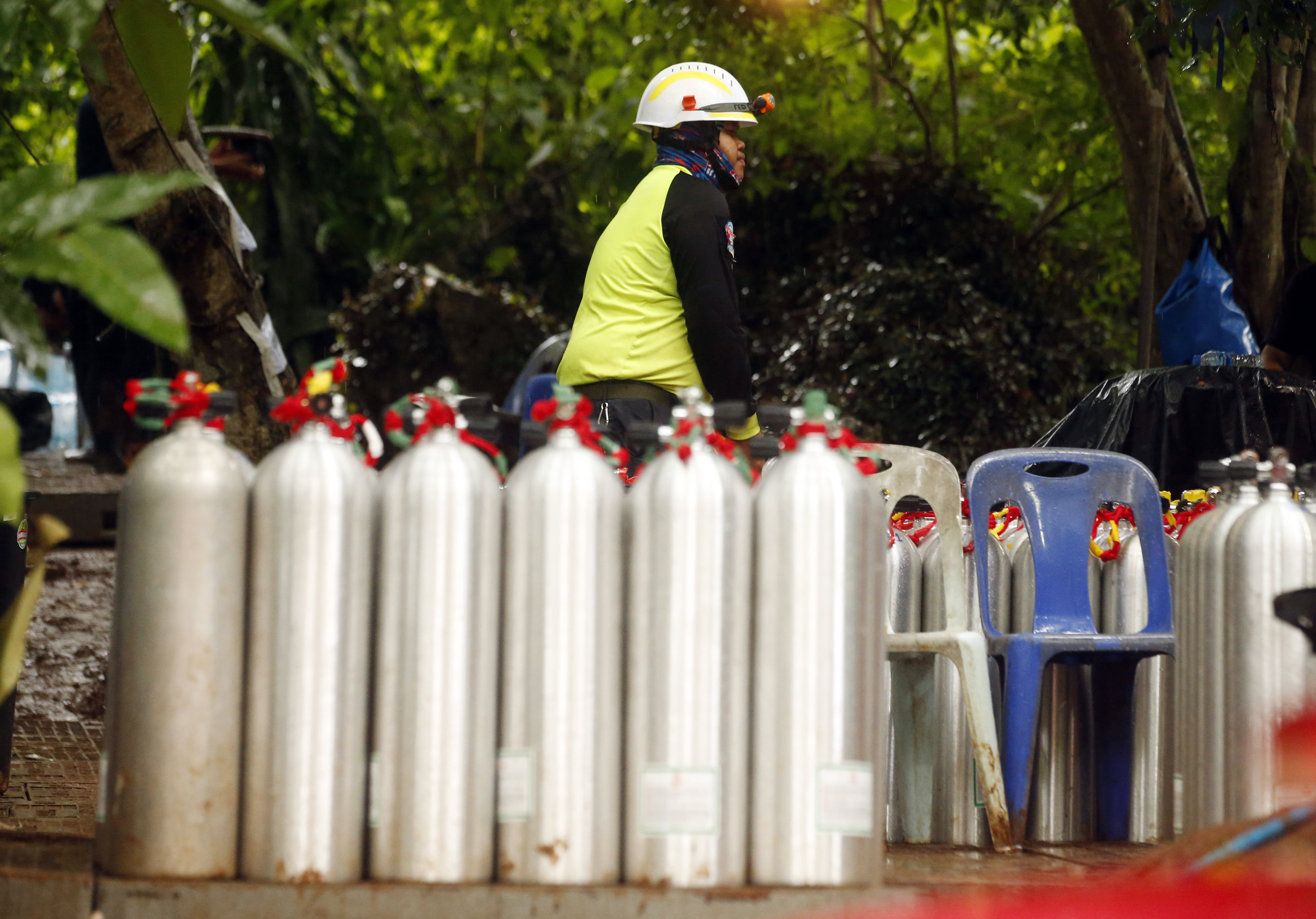BRITISH divers have “spearheaded” the discovery of 12 boys and their football coach missing for nine days in flooded caves in Thailand, however rescuers now face the daunting task of bringing them to safety.
Rick Stanton and John Volanthen are believed to have been the first rescuers to reach the group who disappeared in the Luang Nang Non Cave, Chiang Rai province, on June 23.
There were scenes of elation on Monday as parents and relatives who had gathered at the cave site learned the group had been found in a stable medical condition.
However rescuers still face the challenge of safely helping the boys and their coach to safety through nearly a mile of tunnels, large portions of which are underwater.
Here are the possible options and the risks involved with each one.
1. Diving
The group could be taught to swim through the passages using scuba equipment. But with almost a mile of tunnels, the task is not one suited to beginners. There is also the problem of rising water levels. Search efforts were hampered last week after heavy rain rushed into the cave network, raising water levels and creating strong currents that made diving more or less impossible. The dives into the cave so far have already been a challenge.
Bill Whitehouse, vice-chairman of the British Cave Rescue Council, told BBC Breakfast the operation to free the group is “a real brainteaser”. He said aside from teaching the group to dive, another option is to get divers to bring them out, but said he does not know if that is realistically possible.
2. Wait and re-supply
Rescuers could wait for the water level to drop, which some officials are reported to fear could take months. Experts have said it could be safer to supply them where they are for now, but this could mean a long wait as the country’s rainy season typically lasts into October.
Mr Whitehouse said one of the positives is that air and water temperatures in Thailand are a lot warmer, pointing out that hypothermia would probably have set in by now if this happened in the UK. But with more monsoon rains on the way, potentially causing water levels to rise, supplying the group and attempting to extract them could be complicated.
3. Drill and airlift
Drilling into the chamber and airlifting the group out is another option, but this sort of extraction is thought to be a dangerous one. Rescuers have searched for other possible entrances and drilling equipment has been sent, but creating a shaft large enough for the group to be extracted would be a difficult task. The cave stretches under a mountainside for up to six miles and the rocky ground varies in elevation throughout. It is estimated that the boys are around half a mile below the surface.

Enjoy the convenience of having The Sunday Post delivered as a digital ePaper straight to your smartphone, tablet or computer.
Subscribe for only £5.49 a month and enjoy all the benefits of the printed paper as a digital replica.
Subscribe


